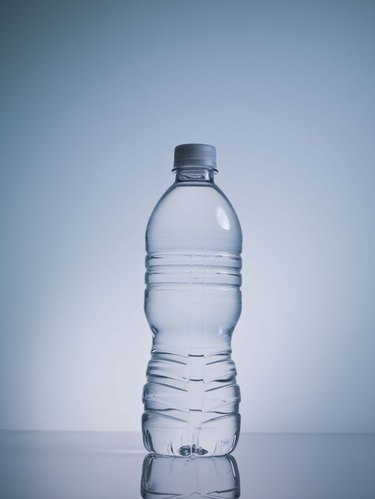Things You'll Need
Potting mix
Pebbles
Plant tray
Bottled water, as needed
Houseplant fertilizer, slow-release

Calathea is a botanical genus with more than 300 species of plants that need warmth to thrive. In the United States, with the exception of a few year-round frost-free areas, you have to cultivate calatheas in pots that stay indoors all the time or go into the house when the temperature drops. Since so many species exist, find out from the nursery what specific requirements yours has and combine them with general-care guidelines. Calathea roseopicta, Calathea makoyana and Calathea sanderiana are some of the most common species.
Step 1
Grow calatheas in well-aerated potting mix that is also rich in organic matter. A blend of loamy soil and peat moss is adequate to provide nutrition while preventing wet roots.
Video of the Day
Step 2
Place pebbles in the pot's tray, and fill it with water. Put the planter on the layer of pebbles. As the water in the tray evaporates, it moisturizes the plant. Verify that the pot's drainage holes are above the water level, preventing the soil from absorbing extra moisture; too much moisture causes the calathea roots to rot.
Step 3
Water your calathea with bottled water if your tap water is hard with minerals; that prevents leaf spots. If you have soft water, let it sit overnight in the watering can before you use it to water the plant. If you have a fish tank at home, use the water you pour out when you clean your tank to water your calathea.
Step 4
Place the plant by a window but not in direct sunlight; calatheas need bright indirect light. Move the plant away from the glass in the winter to protect it from the cold.
Step 5
Control the temperature to keep it ranging from 60 to 75 degrees Fahrenheit year-round. Insulate doors and windows to prevent exposing the plant to drafts.
Step 6
Feed calatheas a slow-release houseplant fertilizer. Cornell University Extension horticulturist Donna Moramarco says that the amount of fertilizer the calathea needs depends on how much light it gets; plants in low light need less fertilizer than those in high light. Start out feeding the plant at the lowest rate and frequency recommended on the product label. If the calathea shows growth, stick with that regimen. Otherwise, increase fertilization in increments until the calathea responds.
Video of the Day